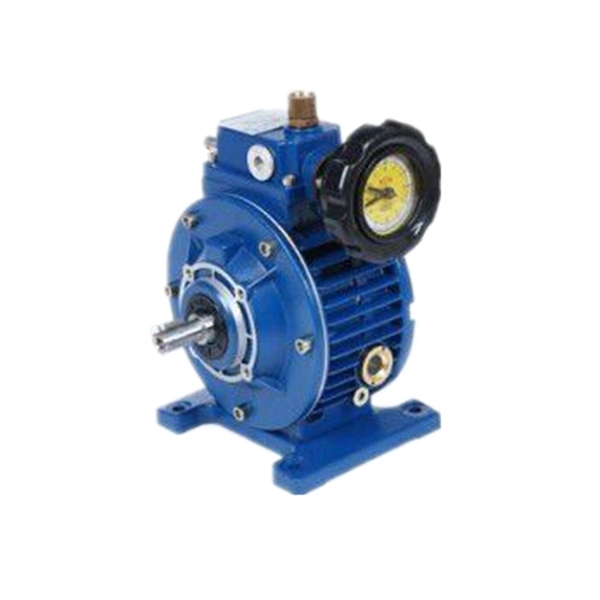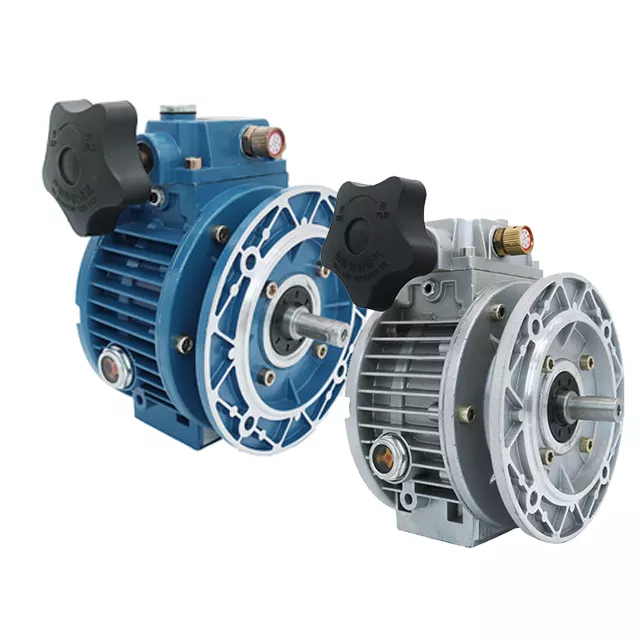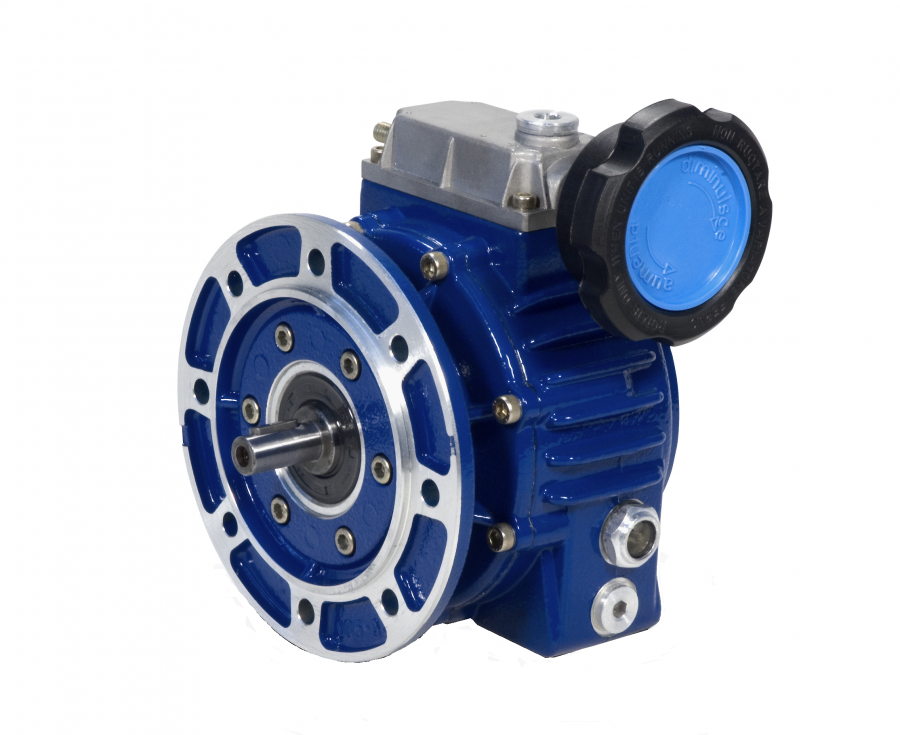Product Description
|
item |
value |
|
Warranty |
1 year |
|
Applicable Industries |
Manufacturing Plant, Construction works , Energy & Mining, Other |
|
Customized support |
OEM |
|
Gearing Arrangement |
Worm |
|
Place of Origin |
ZheJiang , China |
|
Input speed |
1500 |
|
Output speed |
1.3-193rpm |
|
Product name |
Udl Variable Speed |
|
MOQ |
10pcs |
|
Color |
Customization |
FAQ
Q1:Are you a manufacturer or trading company?
Yes, We are a leading manufacturer specialized in production of various kinds of small and medium-sized
motor.
Q2:How to choose a gearbox which meets our requirement?
You can refer to our catalogue to choose the gearbox or we can help to choose when you provide
the technical information of required output torque, output speed and motor parameter etc.
Q3:What information shall we give before placing a purchase order?
a) Type of the gearbox, ratio, input and output type, input flange, mounting position, and motor information etc.
b) Housing color.
c) Purchase quantity.
d) Other special requirements.
Q4:What industries are your gearboxes being used?
Our gearboxes are widely used in the areas of textile, food processing, beverage, chemical industry, escalator,automatic storage equipment, metallurgy, tabacco, environmental protection, logistics and etc.
Q5:How about your delivery time?
For micro brush dc gear motor, the sample delivery time is 2-5 days, bulk delivery time is about 15-20 days, depends on the order qty. For brushless dc motor, the sample deliver time is about 10-15 days; bulk time is 15-20 days.Please take the sales confirmation for final reference.
Q6:What’s your warranty terms?
One year
| Application: | Motor, Electric Cars, Motorcycle, Machinery, Marine, Agricultural Machinery, Car |
|---|---|
| Function: | Distribution Power, Clutch, Change Drive Torque, Change Drive Direction, Speed Changing, Speed Reduction, Speed Increase |
| Layout: | as for Request |
| Hardness: | Hardened Tooth Surface |
| Installation: | Horizontal Type |
| Step: | Stepless |
| Samples: |
US$ 65/Piece
1 Piece(Min.Order) | |
|---|
| Customization: |
Available
| Customized Request |
|---|

What maintenance practices are crucial for prolonging the lifespan of variator gearboxes?
Proper maintenance practices are essential for prolonging the lifespan of variator gearboxes and ensuring their optimal performance. By following these crucial maintenance practices, you can maximize the longevity of variator gearboxes:
- Regular Inspections: Conduct regular inspections of the variator gearbox to identify any signs of wear, damage, or abnormal conditions. Inspect the gearbox for leaks, unusual noises, vibrations, and any visible signs of damage or misalignment. Regular inspections help in detecting potential issues early on, allowing for timely maintenance and preventing further damage.
- Proper Lubrication: Ensure proper lubrication of the variator gearbox components. Lubricants reduce friction, wear, and heat generation, thereby extending the lifespan of the gearbox. Follow the manufacturer’s recommendations for lubricant type, quantity, and change intervals. Regularly check the lubricant levels and top-up or replace the lubricant as needed. Proper lubrication is crucial for smooth operation and preventing premature failures.
- Cleaning: Keep the variator gearbox clean and free from dirt, dust, and debris. Regularly clean the exterior of the gearbox using appropriate cleaning methods and materials. Avoid introducing contaminants into the gearbox during cleaning or maintenance procedures. Cleanliness helps in preventing abrasive particles from entering the gearbox and causing damage to the internal components.
- Torque and Tension Checks: Periodically check the torque and tension of fasteners, belts, or chains associated with the variator gearbox. Ensure that they are properly tightened and tensioned according to the manufacturer’s specifications. Loose fasteners or improper belt/chain tension can lead to excessive vibrations, misalignment, and premature wear of gearbox components.
- Alignment: Verify the alignment of the variator gearbox with the connected equipment or shafts. Misalignment can cause increased stress on the gearbox components, leading to accelerated wear and reduced lifespan. Use appropriate alignment tools and techniques to ensure proper alignment, minimizing excessive loads and improving the longevity of the gearbox.
- Temperature Monitoring: Monitor the temperature of the variator gearbox during operation. Excessive heat can indicate issues such as inadequate lubrication, overloading, or improper ventilation. Regularly check the temperature using temperature sensors or thermal imaging techniques. Address any temperature abnormalities promptly to prevent potential damage to the gearbox.
- Condition Monitoring: Implement condition monitoring techniques to assess the health of the variator gearbox. This can include vibration analysis, oil analysis, or other predictive maintenance methods. By monitoring key parameters, such as vibration levels or oil characteristics, potential issues can be detected early, and appropriate maintenance actions can be taken to prevent major failures.
- Training and Documentation: Ensure that maintenance personnel receive proper training on variator gearbox maintenance practices. Familiarize them with the specific procedures, safety guidelines, and recommended maintenance intervals provided by the gearbox manufacturer. Maintain detailed documentation of maintenance activities, including inspections, lubricant changes, repairs, and any abnormalities observed. This documentation helps in tracking maintenance history and identifying recurring issues.
- Manufacturer Guidelines: Always follow the maintenance guidelines provided by the variator gearbox manufacturer. These guidelines may include specific maintenance intervals, recommended spare parts, and detailed instructions for various maintenance tasks. Adhering to the manufacturer’s guidelines ensures that maintenance practices align with the gearbox’s design and specifications.
By implementing these crucial maintenance practices, you can significantly prolong the lifespan of variator gearboxes, minimize downtime, and optimize their performance throughout their operational life.

Are there any limitations or drawbacks associated with variator gearbox systems?
Variator gearbox systems offer numerous advantages, but they also have certain limitations and drawbacks that should be considered. Here are some of the limitations and drawbacks associated with variator gearbox systems:
Limited Torque Capacity:
One limitation of variator gearboxes is their relatively limited torque capacity compared to some other types of gearboxes. Due to the design and construction of variator systems, they may not be suitable for applications that require extremely high torque transmission. In such cases, alternative gearbox systems with higher torque ratings may be more appropriate.
Restricted Speed Ratios:
Variator gearboxes typically have a limited range of achievable speed ratios compared to some other gearbox types. While they offer a continuous and stepless adjustment of the gear ratio, the maximum and minimum achievable ratios may be narrower compared to gearboxes with discrete gear steps. This limitation may restrict their suitability for certain applications that require extremely high or low speed ranges.
Complex Design and Maintenance:
Variator gearboxes can have a more complex design compared to conventional gearboxes. The presence of variable pulley systems, torque-sensing mechanisms, and control systems adds complexity to their construction. This complexity may require specialized knowledge and skills for maintenance and repairs. Additionally, the availability of spare parts and the cost of maintenance can be higher for variator gearboxes compared to simpler gearbox designs.
Potential for Heat Generation:
During operation, variator gearboxes can generate heat due to friction and mechanical losses. The continuous adjustment of the gear ratio and the interaction between the variable pulley system and the belt or chain can contribute to heat generation. Adequate cooling measures and lubrication systems may be necessary to dissipate heat effectively and prevent overheating, especially during prolonged operation at high speeds or under heavy loads.
Efficiency Losses:
While variator gearboxes can maintain reasonable power transmission efficiency, they may experience some efficiency losses compared to certain other gearbox types. The presence of additional components such as variable pulley systems, control mechanisms, and torque-sensing devices can introduce additional friction and mechanical losses, which can slightly reduce overall efficiency. However, advancements in technology and improved designs have mitigated this drawback to a significant extent in modern variator gearbox systems.
Cost Considerations:
Variator gearboxes can be more expensive compared to some traditional gearbox designs. The complexity of their construction, the need for precise control systems, and the use of specialized components can contribute to higher manufacturing and maintenance costs. Therefore, cost considerations should be taken into account when evaluating the feasibility of variator gearbox systems for specific applications.
Despite these limitations and drawbacks, variator gearbox systems continue to offer unique advantages in terms of continuous speed adjustment, efficient power transmission, and precise control. By carefully assessing the specific requirements of an application and considering the trade-offs, it is possible to determine whether a variator gearbox system is the most suitable choice.

What benefits do variator gearboxes offer in various industrial applications?
Variator gearboxes offer several benefits in various industrial applications, making them valuable components in numerous systems. Here are some of the key advantages they provide:
- Continuously Adjustable Speed: One of the primary benefits of variator gearboxes is their ability to provide continuously adjustable speed control. Unlike traditional gearboxes with fixed gear ratios, variators offer stepless speed variation within a certain range. This feature allows for precise control of rotational speeds in industrial machinery, optimizing performance and efficiency in different processes.</li
- Optimized Power Efficiency: Variator gearboxes help optimize power efficiency in industrial applications. By allowing for continuous speed adjustment, they enable the machinery to operate at the most efficient speed for a given task. This ensures that the system consumes only the necessary amount of power, minimizing energy waste and reducing operating costs.
- Flexible Torque Transmission: Variator gearboxes can handle a wide range of torque requirements, making them suitable for various industrial applications. They can transmit high torque while maintaining their efficiency, allowing industrial machinery to generate the necessary power for demanding tasks. This flexibility in torque transmission contributes to the versatility and adaptability of variator gearboxes in industrial settings.
- Smooth and Precise Control: Variator gearboxes provide smooth and precise control over rotational speeds. The stepless speed adjustment allows for seamless transitions between different speeds without sudden jumps or changes. This smooth control enhances the precision and accuracy of industrial processes, ensuring consistent performance and high-quality output.
- Improved System Performance: By enabling precise speed control, variator gearboxes enhance the overall performance of industrial systems. They allow machinery to operate at the optimal speed for specific tasks, leading to improved productivity, reduced cycle times, and enhanced product quality. The ability to fine-tune the speed also facilitates better synchronization between different components or processes, further optimizing system performance.
- Reduced Mechanical Stress: Variator gearboxes can help reduce mechanical stress on industrial machinery. By allowing for gradual speed adjustments, they minimize sudden changes in load or torque, which can put excessive stress on components. This reduction in mechanical stress contributes to extended equipment lifespan, reduced maintenance requirements, and improved reliability in industrial applications.
- Adaptability to Changing Conditions: Variator gearboxes offer adaptability to changing operating conditions. They allow for real-time adjustments in speed, which is particularly beneficial in applications where the load or process requirements vary. This adaptability enables industrial machinery to respond quickly to changing demands, ensuring optimal performance and efficiency in dynamic environments.
In summary, variator gearboxes provide benefits such as continuously adjustable speed control, optimized power efficiency, flexible torque transmission, smooth and precise control, improved system performance, reduced mechanical stress, and adaptability to changing conditions. These advantages make variator gearboxes valuable in various industrial applications, including manufacturing, material handling, packaging, robotics, and many others, where precise speed control and efficient power transmission are essential.


editor by CX 2023-09-06
